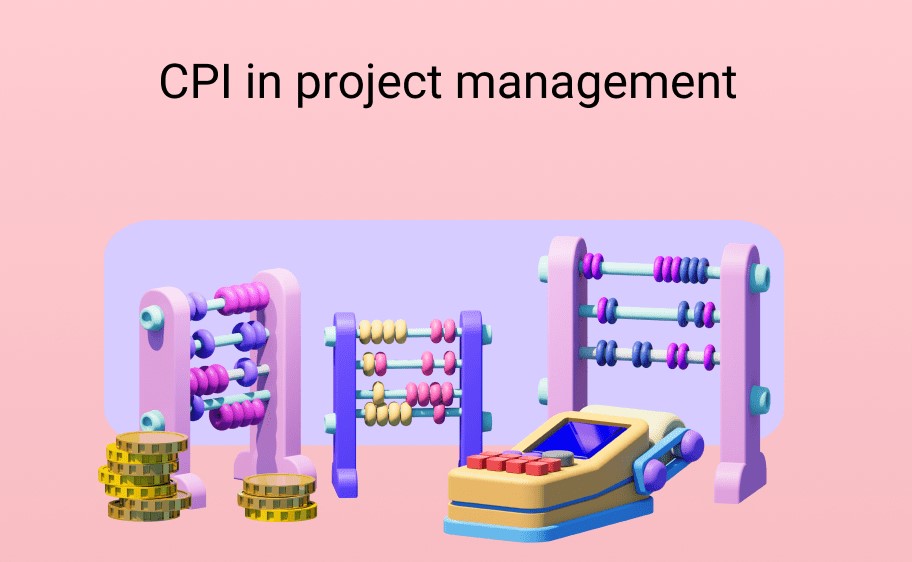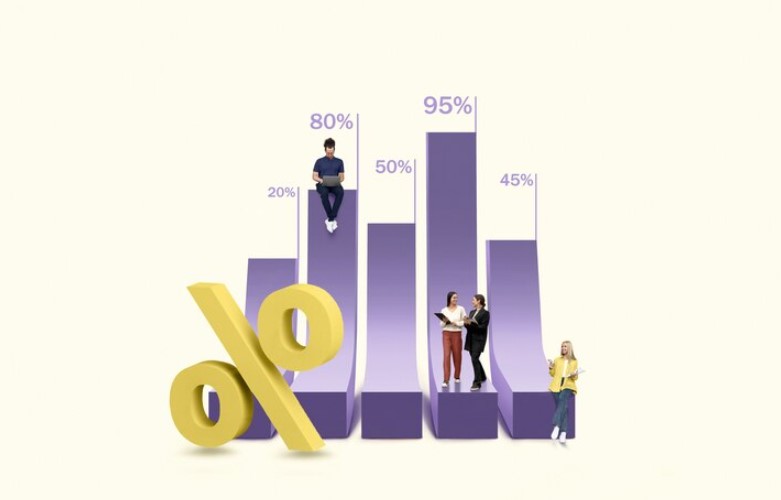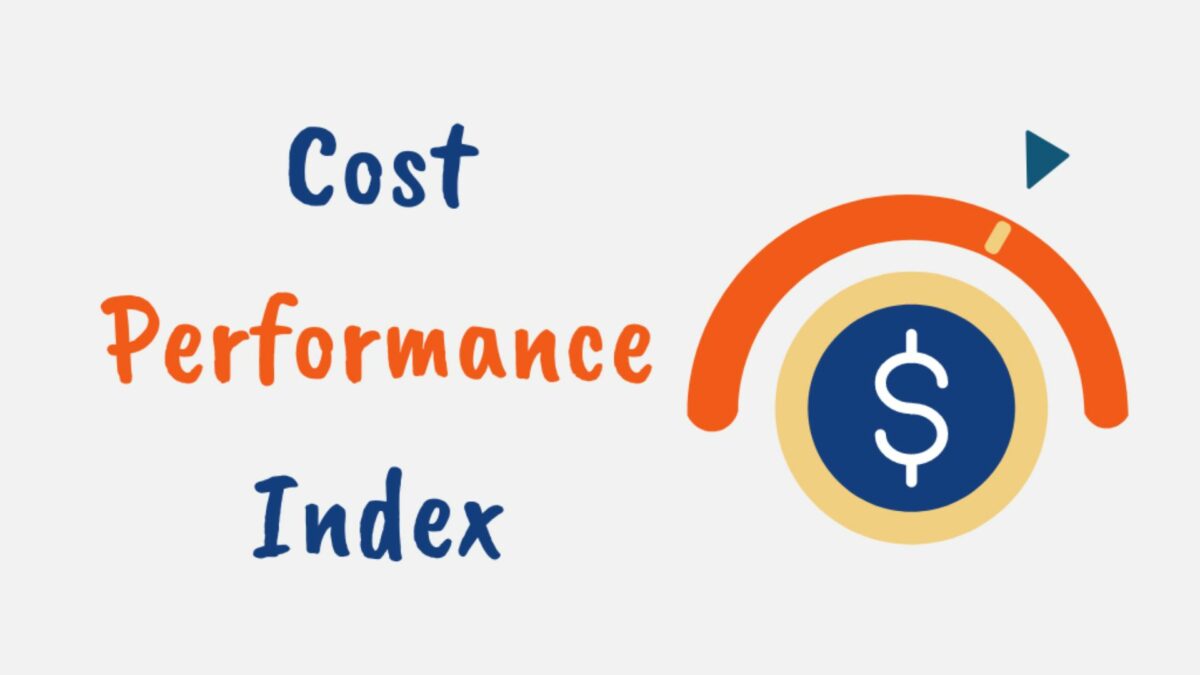Harnessing Cost Performance Index | Optimizing Projects
In the world of project management, numbers talk. And one number that’s always chattering away? That’d be the Cost Performance Index, or CPI. It’s a critical metric that can make or break a project’s budget, and ultimately, its success.
We’ve all heard the saying, “Time is money.” Well, in project management, it’s not just about how much time you’re spending, but how well you’re spending it. That’s where the CPI comes in. It’s a tool that measures the efficiency of your project’s financial resources.
So, whether you’re a seasoned project manager or just starting out, understanding the Cost Performance Index can help you keep your projects on track and your budget in check. Let’s dive in and decode this crucial metric.
What is the Cost Performance Index (CPI)?

Building on the previous discussion of CPI’s critical role in project efficiency and success, delving deeper into its definition and calculation method seems fitting.
What Is the Cost Performance Index?
The Cost Performance Index or CPI, as commonly referred to, bears significant implications for project management. Translating into simpler terms, it’s a measure primarily highlighting the financial efficiency of a project. Think of it as an indicator, a valuable tool used by project managers worldwide. Its primary function revolves around understanding and assessing how efficiently a project utilizes its allocated financial resources. When the Cost Performance Index exceeds 1, it indicates impressive financial efficiency for the project. Any value under 1 signifies the opposite – a lack of optimal resource utilization.
How Cost Performance Index Is Calculated
To derive the Cost Performance Index, two essential entities play fundamental roles: the Earned Value (EV) and the Actual Cost (AC) of a project. The formula for calculating Cost Performance Index is as straightforward as it gets: CPI equals EV divided by AC. To provide more clarity, suppose a project has an EV of $50,000 and an AC of $60,000. In such a case, the CPI becomes 0.83 ($50,000/$60,000), signifying less than optimal use of financial resources. Hence, understanding these concepts and their applications helps project managers strategize better, maximizing a project’s potential.
The Significance of CPI in Project Management

Diving further into the usage of Cost Performance Index, it’s easy to find a link between CPI and lessons of project management. It serves as a robust measurement tool, allowing project managers to make sound decisions. This section discusses the two main components of CPI’s significance in project management: Budget Forecasting and Performance Indicator.
Using CPI for Budget Forecasting
Cost Performance Index presents an invaluable approach in budget forecasting. For instance, the CPI delivers foresight into the financial trajectory of a project. If a project’s CPI value falls below 1, I, as a project manager, know there’s a risk of exceeding the budget. It prompts me to analyze where resources are disproportionately consumed and identify areas for budgetary adjustment. Conversely, a CPI value above 1 signifies the project’s financial resources are being utilized efficiently, potentially indicating room to adapt the budget forecast to accommodate future expansions.
CPI as a Performance Indicator
This incorporation of Cost Performance Index extends further than budget forecasting. It also allows me to track the project’s financial performance effectively. By regularly calculating the CPI, I can benchmark the project against its set standards. A constant CPI value, preferably above 1, instills confidence in the project’s ongoing financial status. However, if the CPI value starts dipping, it’s a clear signal of declining financial performance, necessitating immediate corrective actions. In essence, the CPI serves as a credible performance indicator, assisting me in making informed management decisions.
Advantages of Monitoring the Cost Performance Index

Monitoring the Cost Performance Index (CPI) reaps a handful of benefits in project management, integral to ensuring a project’s financial efficiency and success. I’ll be discussing some key advantages of careful CPI tracking below.
Early Detection of Budget Issues
Foremost, monitoring the Cost Performance Index aids in identifying budget problems at their inception. By comparing the actual project costs with the earned value, CPI gives a real-time view of how well the project aligns with its budget goals. For instance, a CPI of less than one signifies financial inefficiencies, indicating that more budget is consumed than planned. By instantly flagging these discrepancies, companies can swiftly launch corrective measures, mitigating budget overruns and preventing compromise on project quality or timelines. Essentially, CPI serves as a financial thermostat, furnishing project managers with early warnings to keep the project’s monetary resources in check.
Enhancing Stakeholder Confidence
Another advantage is fostering stakeholder management. Stakeholders invest resources and expect effective resource management and robust returns. Monitoring the Cost Performance Index provides them with a transparent, numeric measure of the project’s financial efficiency, instilling confidence about their investments. By seeing a CPI greater than one, stakeholders can appreciate that the project is performing well in terms of cost efficiency, reassuring them of its successful completion and good return potential. Thus, CPI serves as an accountability tool, bridging the information gap between project managers and stakeholders, and fostering trust through its numeric, evidence-based insights.
Limitations of the Cost Performance Index

In spite of its significant role in project management, the Cost Performance Index (CPI) has its own set of limitations. It’s vulnerable to certain distortions and can be influenced by the complexity of the project in question.
Factors That Can Distort Cost Performance Index Readings
A variety of elements can cause Cost Performance Index readings to be misleading. These include inappropriate baselines, indirect costs, and changes to project scope and duration.
- Inappropriate baselines: CPI reads well when the project’s baseline is set accurately. However, if an unrealistic or poorly estimated baseline is used, CPI values may be skewed, leading to an incorrect evaluation of project performance.
- Indirect costs: CPI primarily measures direct costs related to a project’s tasks and activities. If indirect costs, such as overheads or administrative expenses, are included in the dataset, they can obscure the true cost performance.
- Scope and duration changes: If a project experiences scope creep or its timeline alters significantly, CPI values may no longer reflect the project’s true cost performance.
It’s crucial to account for these potential distortions when interpreting CPI values to ensure accurate project performance evaluation and effective decision-making strategies.
The Relativity of CPI to Project Complexity
Another limitation of the CPI lies in its relation with project complexity. The accuracy of CPI can be affected by the complexity level of a project, leading to potential misunderstandings about the actual cost performance.
In simple, straightforward projects, CPI serves as a reliable indicator of cost efficiency since the variables are manageable and predictable. However, when dealing with complex or large-scale projects, various overhead costs and unpredicted variables can emerge, complicating CPI calculations.
Furthermore, complex projects often involve numerous interdependent tasks, which may not conform to a linear progression, thereby reducing the CPI’s reliability in reflecting the overall financial efficiency. Therefore, project managers need to account for this relativity when using CPI as a financial indicator for complex ventures.
Comparing CPI With Other Project Management Metrics

In project management, CPI holds a significant position alongside several other metrics. Recognizing the connection between these measures and CPI can further illuminate a project’s efficiency.
CPI vs. Schedule Performance Index (SPI)
Another key metric in project management is the Schedule Performance Index (SPI). Comparing the two, SPI measures a project’s efficiency in time while CPI measures financial efficiency. They’re numerically similar, but they represent different aspects of project success. Potential parallels exist, though. For instance, a project with an SPI greater than 1 tends to have a CPI greater than 1, showing both time and cost efficiency. However, this isn’t always the case, considering variables like scope changes or unforeseen costs.
Integrating CPI With Earned Value Management (EVM)
CPI isn’t a standalone measure—it’s part of a broader system known as Earned Value Management (EVM). EVM integrates scope, cost, and schedule to assess project performance and predict future outcomes. It includes measures like the Budget Cost of Work Performed (BCWP), and the Planned Cost of Work Scheduled (PCWS). Because CPI equals BCWP divided by PCWS, EVM inherently measures CPI. Using CPI alongside the other EVM metrics gives a comprehensive picture of project efficiency. For example, a high CPI but low PCWS could indicate underutilization of resources, while a low CPI and high PCWS might signal a project operating over budget. Utilizing these hard data, project managers can make informed decisions to improve project performance. Overall, integrating CPI with other metrics gives a fuller, more nuanced picture of a project’s performance.
Real-world Applications of the Cost Performance Index

Transitioning from the theoretical aspects, let’s delve into actual scenarios where CPI plays a pivotal role. Practical instances often provide insights into theories more effectively than standalone definitions or conceptual statements.
Case Studies: Success through CPI
Several organizations attribute their project success to the strategic use of CPI. One such instance is the case of the Manhattan Project, an American research project that produced the first atomic bombs during World War II.
Reports reveal that due to the project’s high stakes, the team rigorously monitored the CPI to ensure efficient use of resources. The project, initially budgeted at $2 billion, ended with actual costs hovering around $2.2 billion. This outcome, while exceeding the budget, was lauded, considering the project’s complexity and the magnitude, yielding a CPI of 0.91.
In another instance, the Canadian healthcare sector saw a successful implementation of a new health record system. The project faced a multitude of complexities, from dealing with sensitive data to managing multiple stakeholder needs. Yet, constant monitoring of CPI helped the team to remain within budget, achieving a near-perfect CPI of 0.98.
From these cases, one can decipher the role of CPI in maintaining a project within budget, even amidst complexities. However, there are also instances where projects, despite rigorous tracking, ended up with low CPIs.
Lessons Learned from Projects with Low CPIs
Low CPIs often signal budget overruns and inefficacies in cost management. Two such instances were the Sydney Opera House and the Montreal Olympic Stadium, notorious in the realm of project management for their budget overruns.
The Sydney Opera House exceeded its budget manifold, with the final costs achieving an alarming fourteen times the initial estimate. Analyses suggest that this anomaly could be attributed to radical design changes mid-project, leading to a low CPI of 0.07.
The Montreal Olympic Stadium, another project marred by cost overruns, saw its budget spike from an estimated $134 million to over $1.6 billion, resulting in a CPI of 0.083. Amongst the identified culprits were labor strikes, structural complexities, and unforeseen contingencies.
Through these instances, one can grasp the repercussions of not managing the CPI effectively. Consequently, the importance of mitigating risks, managing scope changes, and establishing an effective CPI baseline becomes evident.
Conclusion
So, we’ve seen how CPI is an invaluable tool in project management. It’s not just about crunching numbers, but using this metric to enhance financial efficiency and steer projects toward success. It’s clear that understanding and effectively managing CPI can make a world of difference in budget forecasting, stakeholder confidence, and overall project outcomes.
Yet, it’s equally important to remember that CPI isn’t infallible. Factors like project complexity, scope changes, and inaccurate baselines can skew its readings. Therefore, it’s crucial to take these into account when evaluating a project’s financial efficiency.
Lastly, the case studies we’ve looked at serve as powerful reminders of the impact of CPI. Whether it’s the triumph of projects like the Manhattan Project or the lessons learned from the Sydney Opera House, it’s evident that a keen eye on CPI can be the difference between project success and failure. Here’s to better project management with CPI!
Frequently Asked Questions
Q1. What is the Cost Performance Index (CPI)?
CPI is a financial metric utilized in project management to gauge the efficiency of expenses related to project activities. It’s helpful in budget management and influences a project’s success.
Q2. How is the CPI calculated?
CPI is calculated by dividing the earned value by the actual cost. It quantifies the project’s financial efficiency and is a vital tool for optimizing project performance.
Q3. What are the limitations of CPI?
CPI can sometimes provide distorted readings due to inappropriate baselines or changes in a project’s scope. It’s essential to consider these factors accurately to ensure correct project evaluation.
Q4. Can CPI predict project success?
Yes, CPI can help predict project success. A high CPI value signifies effective cost management and a heightened chance of project success.
Q5. How does CPI relate to project complexity?
The reliability of CPI as a financial indicator can be impacted by project complexity, particularly in projects with unpredictable or variable factors.
Q6. What role did CPI play in successful projects like the Manhattan Project?
The success of projects like the Manhattan Project is attributed to effective CPI monitoring, which helped manage costs, control changes in scope, and mitigate risks.
Q7. What happens when a project has a low CPI?
Projects with low CPIs like the Sydney Opera House and the Montreal Olympic Stadium indicate budget overruns and inefficiencies in cost management, leading to project failures.

Leave a Reply